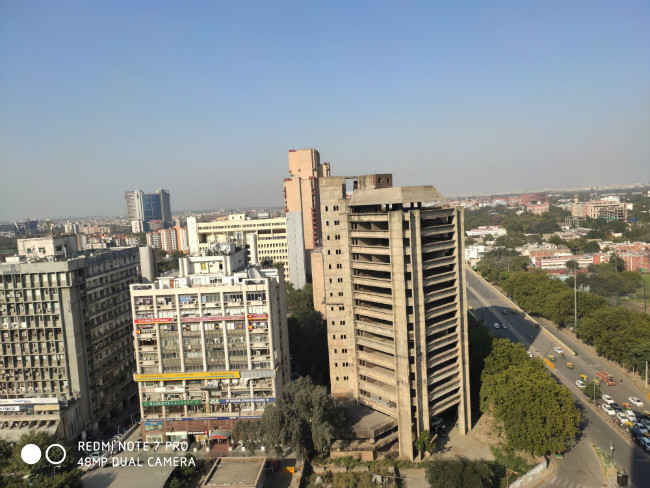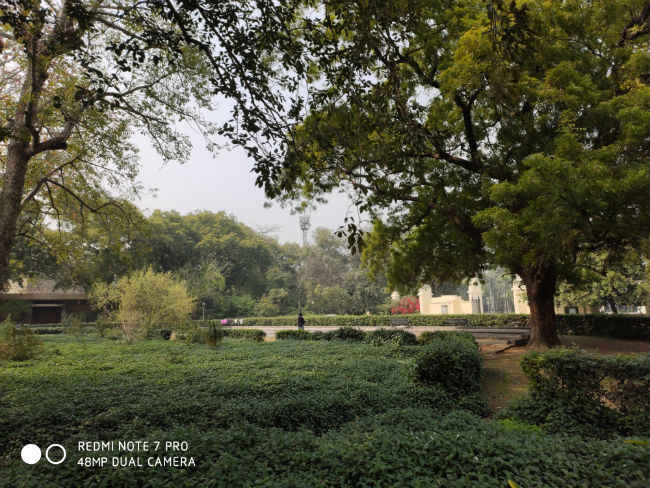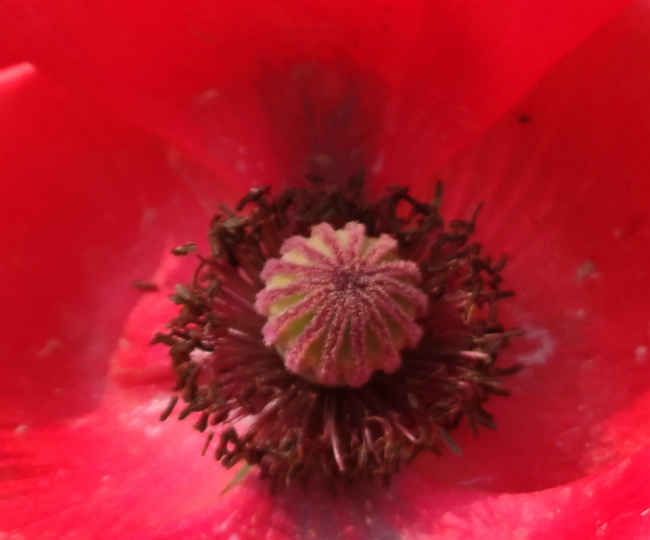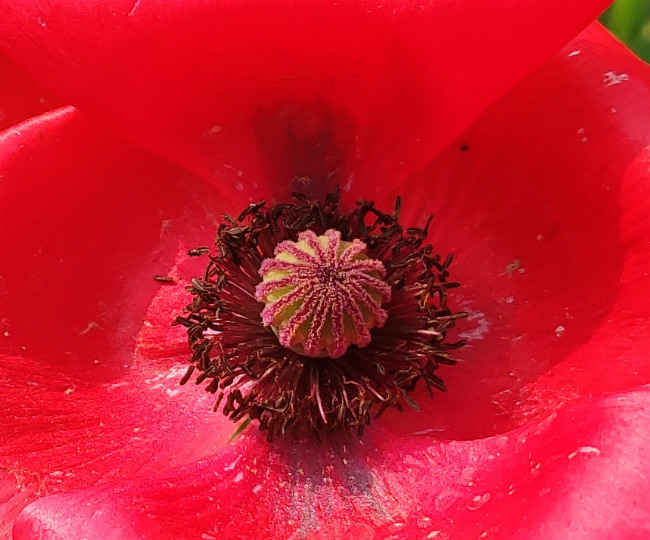Xiaomi Redmi Note 7 Pro: 48MP vs 12MP camera shootout
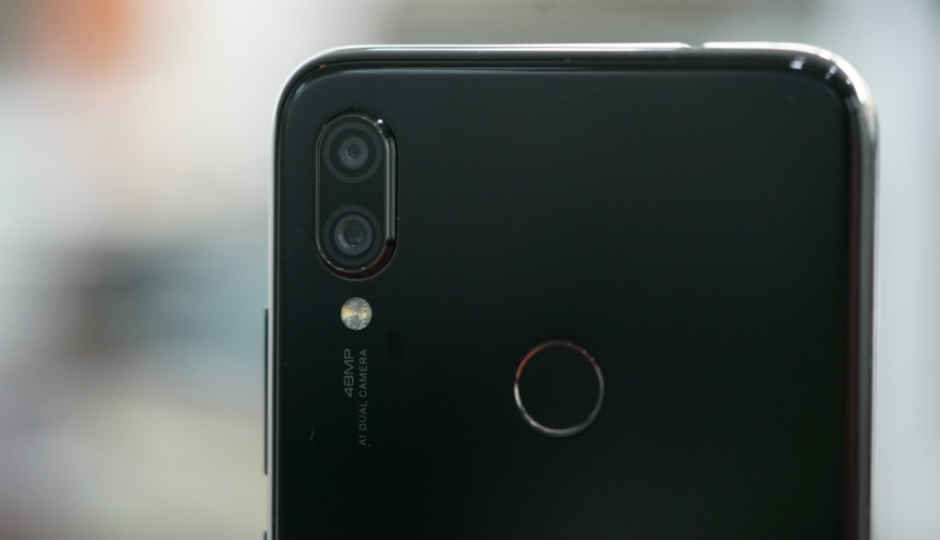
At the launch event, Xiaomi suggested users to shoot more in 12MP as 48MP shots will take up more storage space. Turns out that's not the only reason you should stick to shooting in 12MP only.
Earlier, we did a camera comparison between the Xiaomi Redmi Note 7 Pro and the Vivo V15 Pro to see if there is a significant difference in the image quality when using the two different 48MP cameras. The Redmi Note 7 Pro relies on the Sony IMX586 sensor while the Vivo V15 Pro uses the Samsung GM-1 sensor. The results proved the Redmi Note 7 Pro’s 48MP output lacked detail and sharpness as compared to the Vivo V15 Pro, but did exhibit slightly better dynamic range. Now, we compared the same 48MP photos taken with the Redmi Note 7 Pro with the 12MP output that the phone gives by default. The results once again took us by surprise —
Disclaimer: The 48MP images used in the article have been taken using the pro-mode of the Redmi Note 7 Pro. The phone was also running on MIUI 10 Global Beta. The images used in the article have been resized for the web. To see the images in their original resolution, check out our Flickr gallery.
Details
The 48MP sensors promise more details in a photo when you zoom in. That’s the primary use-case of any high-resolution camera. Most professionals shoot in high-resolution to either take out large prints or to crop the image to focus on a particular section. When the resolution is high, the cropping does not lead to a big loss in details.
The 48MP sensor on the Redmi Note 7 Pro should also ideally serve this purpose. Considering the output is in 8000×6000, you should be able to crop a portion of the image and get the required details is higher quality than what you’d get from older camera sensors. However, looking at the sample below, the 12MP photo from the Redmi Note 7 Pro is able to produce more details than the 48MP photo of the same.
Shot in 48MP (1/1295 s, f/1.8, ISO 113)
100 percent cropped
Shot in 12MP (1/1257, f/1.8, ISO 112)
100 percent cropped
When we cropped a portion of the photo by 100 percent, we noticed that the details on the 12MP photo are actually better preserved, even though both photos make the text appear smudged. However, if you look at the straight lines like the railings and the windows, they appear far more detailed in the 12-megapixel version than in the 48MP one. Both photos have been taken with similar shutter speeds and even the ISO sensitivity is pretty similar, yet the lower resolution 12MP photo manages to offer more details than the 48MP shot.
Shot in 48MP (1/1053 s, f/1.8, ISO 113)
100 percent cropped
Shot in 12MP (1/1085, f/1.8, ISO 112)
100 percent cropped
The second sample makes our observation even clearer. You can clearly read the title of the plaque in the 12MP photo, something we also saw on the 48MP photo taken by Vivo. On the other hand, the 48MP photo taken by the Redmi NBote 7 Pro, when zoomed in, has completely blurred the text.
In both the samples, overall, the 12MP photo seems to be sharper than the 48MP counterpart, even without zooming in.
Our guess why this is happening is that the 12MP photo is being subjected to multi-frame noise reduction and Xiaomi’s proprietary algorithms to improve sharpness. However, it’s the larger sensor size with the binned pixels that are able to capture more light and as a result, more details.
When shooting in 48MP, the Xiaomi Redmi Note 7 Pro uses the native resolution of the sensor where individual pixels are 0.8 microns in size. However, when in 12MP, the pixels are binned to get light sensitivity equivalent to a pixel size of 1.6 micron. This could be the reason why the 12MP photos that the Note 7 Pro takes are better in terms of details.
Sharpness
Shot in 48 (1/1295, f/1.8, ISO 113)
100 percent cropped
Shot in 12MP (1/1276, f/1.8, ISO 112)
100 percent cropped
While both photos appear quite sharp and crisp when seen as is, when we cropped a darker area by 100 percent, the sharpness was higher in the 12MP sample than in the 48MP sample. The wires in the 48MP sample (100 percent crop) are faded and appear smudged. In the 12MP image (100 percent crop), the wires are much more prominent. The 48MP mode isn’t quite useful it seems, since it doesn’t serve the purpose of allowing closer crops.
Shot in 48MP (1/1524, f/1.8, ISO 112)
100 percent cropped
Shot in 12MP (1/1501, f/1.8, ISO 113)
100 percent cropped
We doubled checked our observations from the first sample with another well-lit image taken in both 48MP and 12MP. In this case, the difference in the quality is obvious even without zooming in. The 12MP shot has far better dynamic range than the 48MP shot. Even the colours are richer on the 12MP shot. The 100 percent crop of both the samples reveals the 12MP shot preserves the details more accurately. The straight lines in the gate far away are much clearer and sharper than what the 48MP photo achieved.
Close-up
Shot in 48MP (1/807, f/1.8, ISO 112)
100 percent cropped
Shot in 12MP (1/807, f/1.8, ISO 112)
100 percent cropped
The best example of what the difference between the 48MP mode and the 12MP is can be seen in a close-up shot. When shooting macro, most sensors manage to capture a lot of detail. Being half-inch in size, we expected the Sony IMX586 sensor to offer higher details and sharpness. However, the 48MP photo when zoomed in did not offer much clarity. The 12MP sample though was sharp and crisp. The amount of details the 12MP mode offers is astounding.
Dynamic Range
Shot in 48MP (1/574, f/1.8, ISO 113)
Shot in 12MP (1/100, f/1.8, ISO 157)
As we had noticed in the camera shootout between the Redmi Note 7 Pro and the Vivo V15 Pro (comparing the 48MP Sony sensor and the 48MP Samsung sensor), the dynamic range achieved by the Redmi Note 7 Pro is pretty impressive. When compared between the 12MP mode and the 48MP mode, the 12MP mode managed to recover more details in the shadows. The wall on the right along with the patch of shrubs look slightly more dynamic and rich than the one in the 48MP sample. However, the bricks on the pathway are more prominent on the 48MP sample. The 48MP sample is also warmer than usual, indicating the white balance is a little off. The 12MP sample, by combining multiple exposures in HDR manages to stabilise the white balance as well.
Final Thoughts
The 48MP camera on the Xiaomi Redmi Note 7 Pro could be considered counter-productive in some ways. The phone promises to offer the ability to take ultra-high-resolution photos, however, the results are not of passable quality, especially if you’re planning to get a large print of the photos you’re shooting. After all, why else would you need a 48MP photo? On the other hand, the 12MP photos that the Redmi Note 7 Pro are far richer in clarity and sharpness than what we have seen from older 12MP and 16MP cameras. The binned-mode of the Sony IMX586 sensor is the secret ingredient in making this half-inch sensor one of the best there is, and the Redmi Note 7 Pro takes full advantage of it. We wish it made better use of the 48MP mode, though. For one, the phone doesn’t let you shoot in RAW in 48MP resolution, which might have resulted in better images, considering the phone wouldn’t have applied the noise-reduction algorithms we think it’s applying when we used the 48MP in pro-mode. After everything, it’s clear that when shooting with the Redmi Note 7 Pro, it’s better to shoot in the default 12MP mode than in the 48MP mode for the best results.

